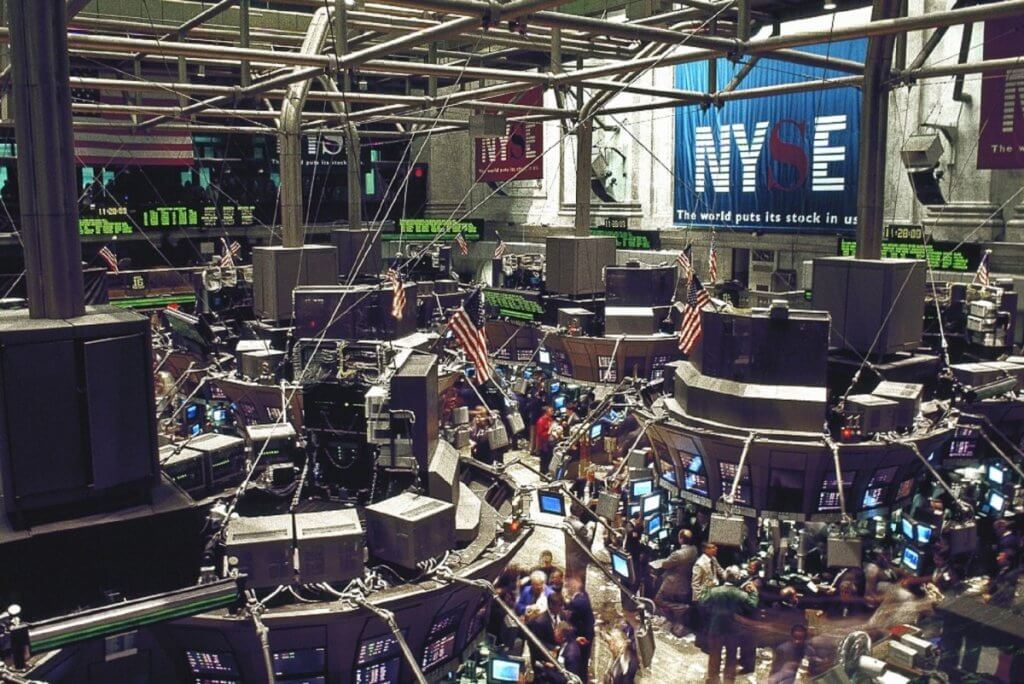
16.06.2020
The service of reception and transmission of stock exchange orders (RTO)
When we look at the stock exchange market, the first thing we see is that we cannot buy the products that it offers us directly. We must go to an authorized intermediary in order to do it. This is the role of the Investment Firms.
 Por
Cobo Aragoneses, José Luis
Por
Cobo Aragoneses, José Luis Introduction
There are multiple services an Investment Firm can provide, such as portfolio management, provision of investment advice, dealing on own account, underwriting of financial instruments…, Nevertheless, the service of reception and transmission of stock exchange orders (RTO) is the first service an investor asks for.
However, what is the service of reception and transmission of stock exchange orders (RTO)?
It is the process whereby the Investment Firm receives the order (of buying or selling) and it transmit that to the market. Notwithstanding, this process is not that simple.
Firstly, we must clarify the fact that any type of Investment Firm can provide this service. Whether they are broker-dealers, just brokers, a portfolio management company or a financial advisory firm.
It is the most basic investment service; thus, every Investment Firm is authorized to provide it. However, once the order is received, this must be transmitted and executed in the market. Here is where the process gets complicated.
In order to execute a stock exchange order in the market, Investment Firms that receive the order must be authorized in the relevant market. It must be a member of that market. Due to the fact that there are lots of markets, there are also a huge number of Investment Firms that are members of those markets. Therefore, it is normal that the Investment Firm that receives and transmit the order is different to the one that execute that order.
Si te ha interesado este artículo no dudes en leer:
The Basics of Brokers
What is a stock market order?
Stock market investment is a process that goes through different stages. The first one is the simple decision of investing as such. Afterwards, we must decide in which specific securities we want to place our investment. Once this is clear, we must look for an authorized expert. A market operator (an Investment Firm), in order to buy the securities that we have opted for. This purchase is done following the process previously mentioned. This order given to the stock exchange operator has the legal form of a fee agreement. Due to the fact that what is being ordered is the purchase of listed securities, it receives the name of stock exchange fee. This way, the stock exchange fee agreement is commonly known as stock exchange order.
Moreover, a second legal business exists in this operation, which is none other than the buying and selling of securities. Thus, the RTO service includes two different legal business: the stock exchange fee and the buying and selling of securities.
In which context does RTO normally takes place?
As it was previously mentioned, the object of an RTO is a stock exchange order. This stock exchange order has the legal form of a stock exchange fee. However, stock exchange fees are not usually given as the main contract, but as an auxiliary contract to the main one. The vast majority of orders are not produced individually, but they are given within an ongoing relation with the Investment Firm. The main contracts within which the stock market orders are usually framed are:
- Stock market current account contract,
- stock market custody and management agreement, and
- portfolio management contract.
What type of orders exist?
The first differentiation that exists is between simple and complex orders. In the simple ones, the investor orders one sole operation, disappearing the link between the investor and the Investment Firm once this order is executed. On the contrary, in the complex ones, the relationship is maintained, by ordering and executing multiple operations.
In addition, stock exchange orders can be classified as:
Stock Exchange orders according to its price:
- Order for the best or to the best change. This is the most commonly used order. They are entered without a price, and then executed at the best available price at the time they are ordered. If the best price at that time does not have enough volume to cover the entire order, the unfulfilled part will be limited to the price. It cannot be crossed with a more unfavorable price. This type of order is used when the investor wants to ensure immediate execution with some control over the price.
- Limited order or with a limit. The investor sets a maximum price (buying order) or a minimum price (selling order). The operation is executed if a price below the maximum (buying) or above the minimum (selling) of the stablished limit is found.
- Approximate change order or “around” order. The investor sets a price range within which the trader can execute the trade.
- “Will” order. The investor orders the order to be executed at the price set at the end of the trading session.
- Stop order. The investor sets a price below or above which the broker must execute the order.
- Market order. It is similar to the order for the best. It differs in that the part that cannot be executed at the best price will still be executed at the next best available price.
Stock Exchange orders according to the deadline:
1.- Valid during a trading session.
2.- Valid until a concrete date.
3.- Valid until the last day of the week.
4.- Valid until the last day of the month.
Due to the fact that stock exchange orders can be cancelled at any given time prior to the execution of the same, the following distinction can be made:
1.- VTC Orders (“Valid till Cancel”): They can be executed at any time, as long as they are not cancelled.
2.- IOC Orders (“Immediate or Cancel”): They are cancelled if they are not executed, at least, immediately.
3.- FOK Orders (“Fill or Kill”): It is a more restricted version of the IOC orders. They must be executed immediately and entirely, otherwise they are understood as cancelled.
Stock Exchange orders depending on the amount of values:
1.- All or nothing order: The purchase or sale of a number of securities is ordered. If all cannot be bought or sold, the order cannot be executed.
2.- Minimum order: The order is to buy or sell a minimum number of securities.
3.- Order of multiples: The order is to buy or sell lots of securities (e.g., buy hundred shares at a time)
4.- Sum order: The order is to buy or sale every possible security with a fixed amount of money. This is the most common.
Stock exchange orders because of its relation with other orders.
1.- Independent orders: The order is to buy or sell independently, without relying upon any other circumstance.
2.- Linked orders: The order is to buy or sell a security with the condition that other security was either sold or bought.
Conclusion
The reception and transmission of stock exchange orders (RTO) is the most common service of investment in the securities area. It is the fastest, most direct and cheapest way for starting to invest our savings. For this reason, a good knowledge of the operation and the regulation that governs them is essential for any small investor.
If you liked this article, you may also find the following interesting









